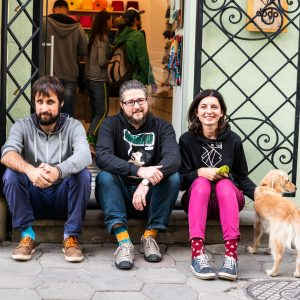This is a story of how a creative business may sew the country together. IT-specialists from Lviv and sewing factory owners from Luhansk would have never met if it wasn’t for the military conflict in the East of Ukraine. It was after ordering socks for the army, that Andrii, Marta, and Roman decided to create their own socks startup. At the time, because of the occupation of the territories and the loss of their customer base, the workers of the Rubizhne Stocking Manufactory were looking for new customers outside of Donbas and Slobozhanshchyna. And they found them. 1200 kilometers away, in Lviv. Now, socks for one of the most famous Ukrainian brands from Halychyna are created in the East.
Following the Ukrainian Revolution of Dignity, there was a “business revolution” in Ukraine. New brands appeared, whose products were loved both on the domestic market and abroad. These include the colorful “Dodo Socks”. The brand was founded by the entrepreneurs from Lviv, who decided to quit their stable IT jobs in order to create their own product.
Marta Turetska and Andrii Pliasun worked together for an IT company. At some point they got bored with the office work and started searching for a job for pleasure. In 2015, together with Marta’s husband Roman Shuper, they began manufacturing socks of their own design

The business choice was made by accident. The company, where the future entrepreneurs worked, was allocating funds for the needs of Anti-Terrorist Operation. One time, Marta and Andrii were assigned to buy winter socks at the manufacturing plant, where they first met the director of the enterprise. Then, one day, they commented on social media that the designs of those socks were too depressing, and the colors were too monotonous. Then, the director suggested that they create their own design:
— And so, we made bicycle print socks, gave them out to our friends, and everyone liked them. Well, not really gave out, but sold! We were starting our business, after all.
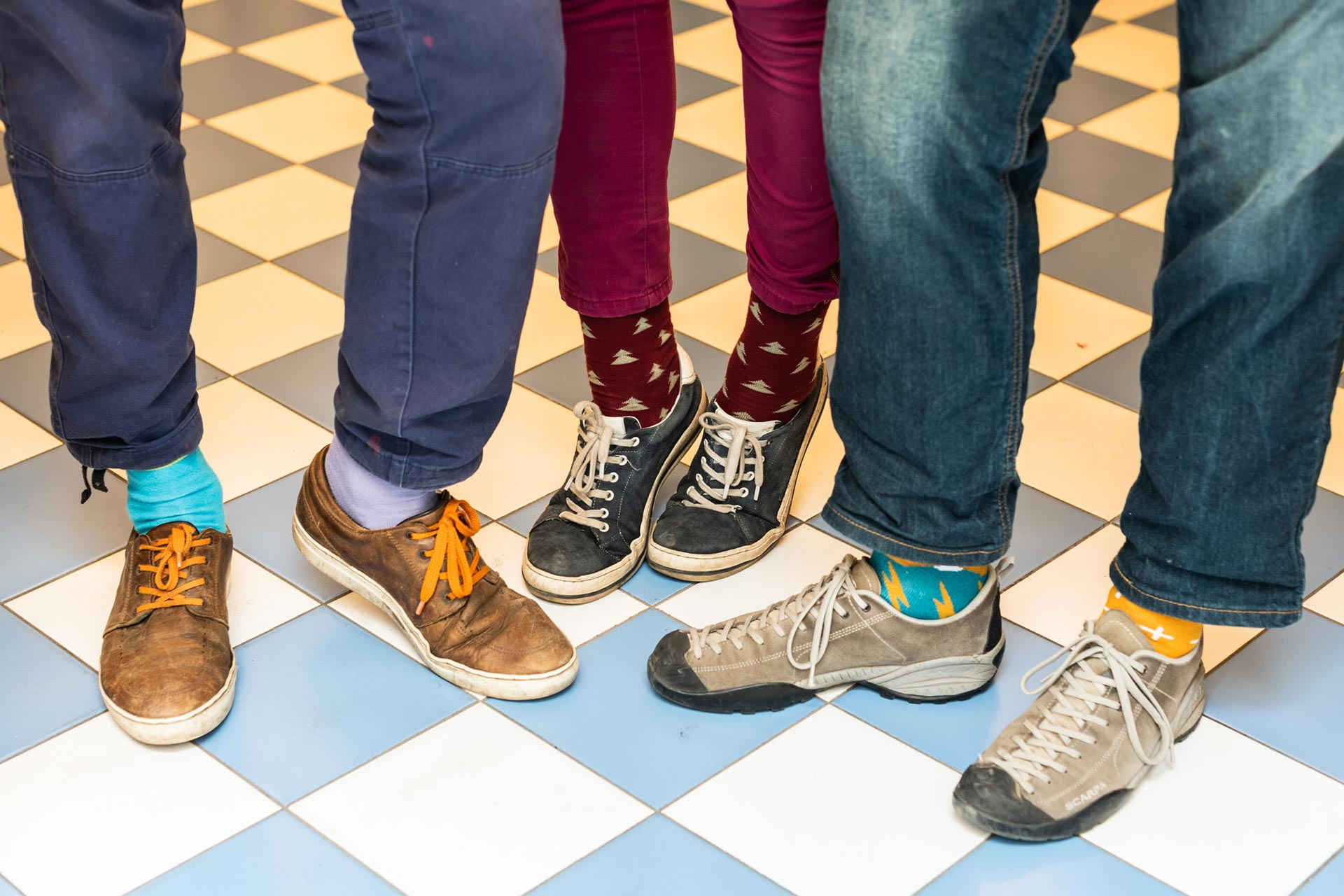
The entrepreneurs started out in autumn, a high season, so the second batch of socks was sold out in two weeks. And then, they were faced with a choice, Marta said:
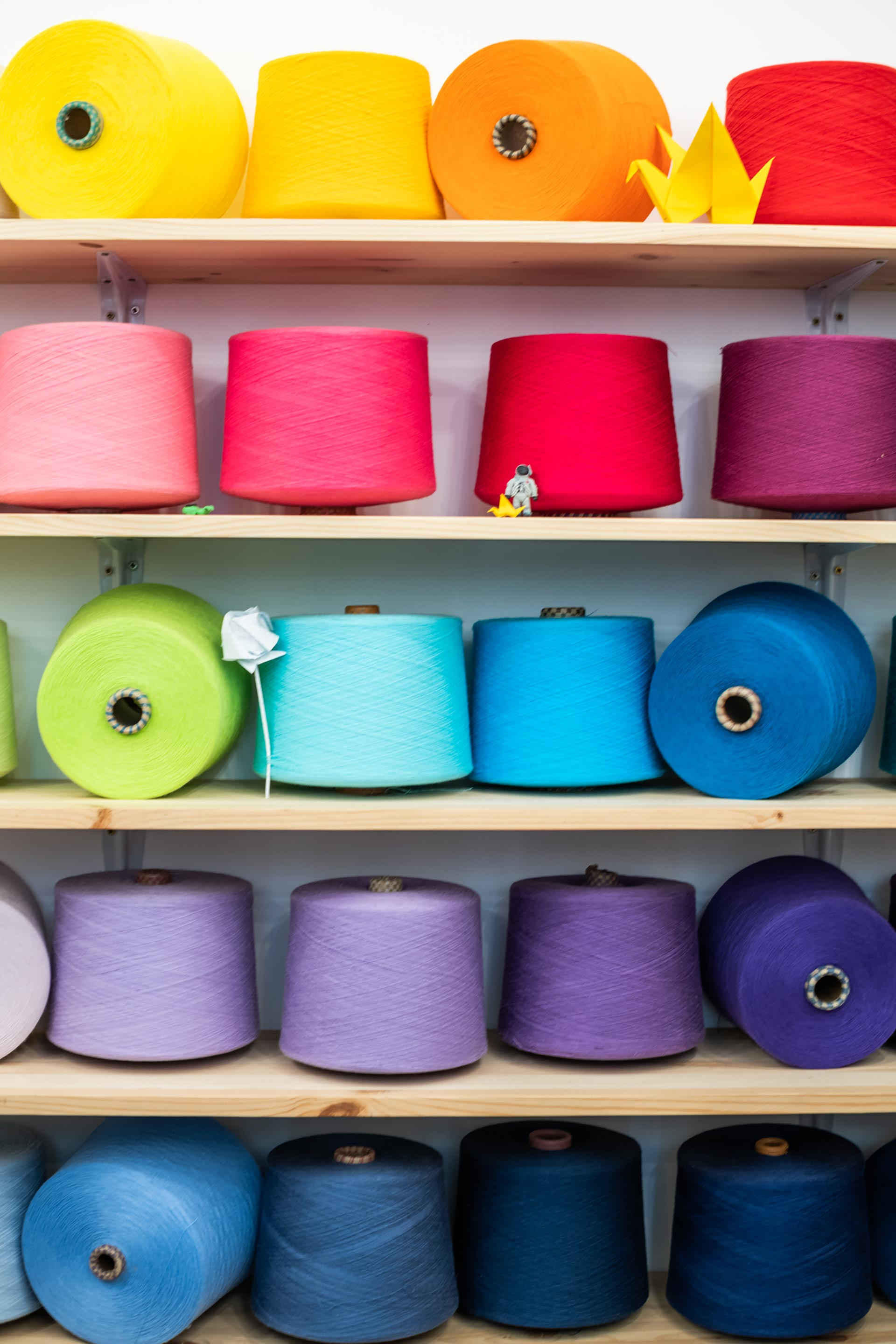
— We made some more, then we thought – ok, let’s make a logo to put some label on them. And so, one thing led to another. And later, at a certain point, we realized that we had to choose: either IT, or “Dodo”. Combining both was not working. And we decided to opt for “Dodo”. First me, then Andrii.
At first, the socks were sewn at the local factory. However, the “Dodo Socks” owners had to look for alternatives, because the factory was small and equipped with old machinery. Lack of raw materials in winter sped up the search, for socks are bought the most during the cold season:
— In February, we ran out of raw materials. Our storage was empty because everything was sold out on Saint Mykolai (Nicolas) Day, New Year, and all the winter holidays. At the time, there was a shortage of raw materials all over western and central Ukraine. We worked with Kharkiv then, and they, for instance, had no thread. We called raw material suppliers in western Ukraine, whom we knew, and they had only grey, black, and white thread. Well, you’ve seen our socks – they are so colorful.
Then, the team started searching for a colorful thread supplier. They came across Rubizhne Stocking Manufactory by accident. That’s how the cooperation, which has been lasting over a year now, has begun.
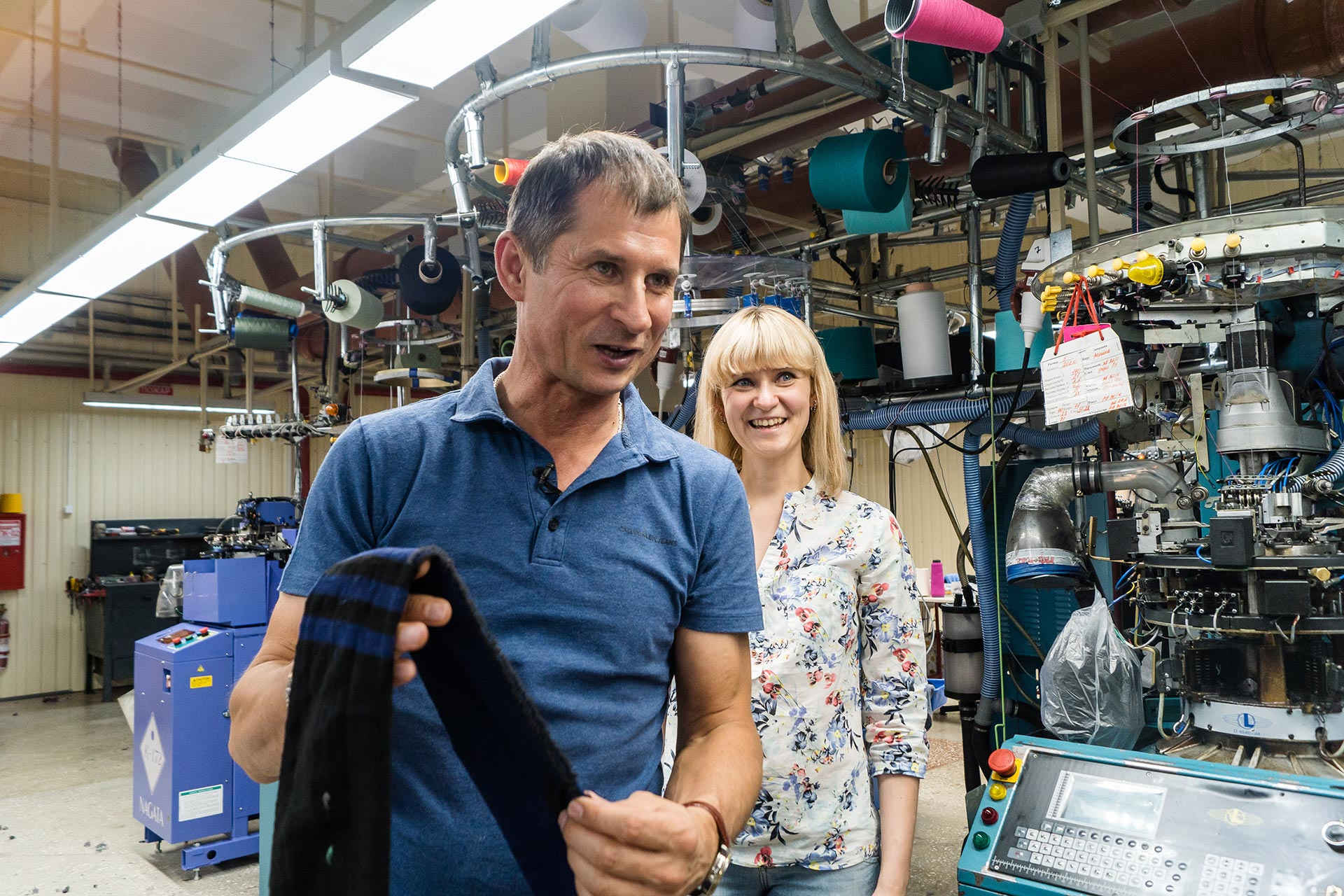
Stocking manufactory
Rubizhne Stocking Manufactory started out with a pretty small room, two workers, and two machine tools. Today, more than 20 years later, there are over 140 workers and up to 60 working machines at the manufactory. In addition to cooperating with “Dodo Socks”, the manufactory also produces over 40 types of hosiery products of such trademarks as: “Lady May”, “AfRyka”, and “Misyurenko”.
Everything has begun in the 1990s. Hennadii Misiurenko, current director of the manufactory, then worked as a machinery supervisor at the factory. But when the factory was closed down, Hennadii, together with his brother Oleh, started sewing socks for sale, and later bought the equipment needed to produce them.

— We rented small premises, a little room of 20 square meters. My brother did equipment service and knitting, and I stitched the tags. Then I would go to the market and sell them. That’s how we started our business. He would go out for lunch; and I would start knitting the socks. Later we expanded, began hiring workers, and gradually developed.
Rubizhne Stocking Manufactory is one of the market leaders; it also boasts several awards and quality certifications. Product quality is a priority for the manufacturers. They explain this by saying that the bright advertisement and package may get you to buy the product just once. However, if there’s a poor-quality product inside, no one will buy it again.
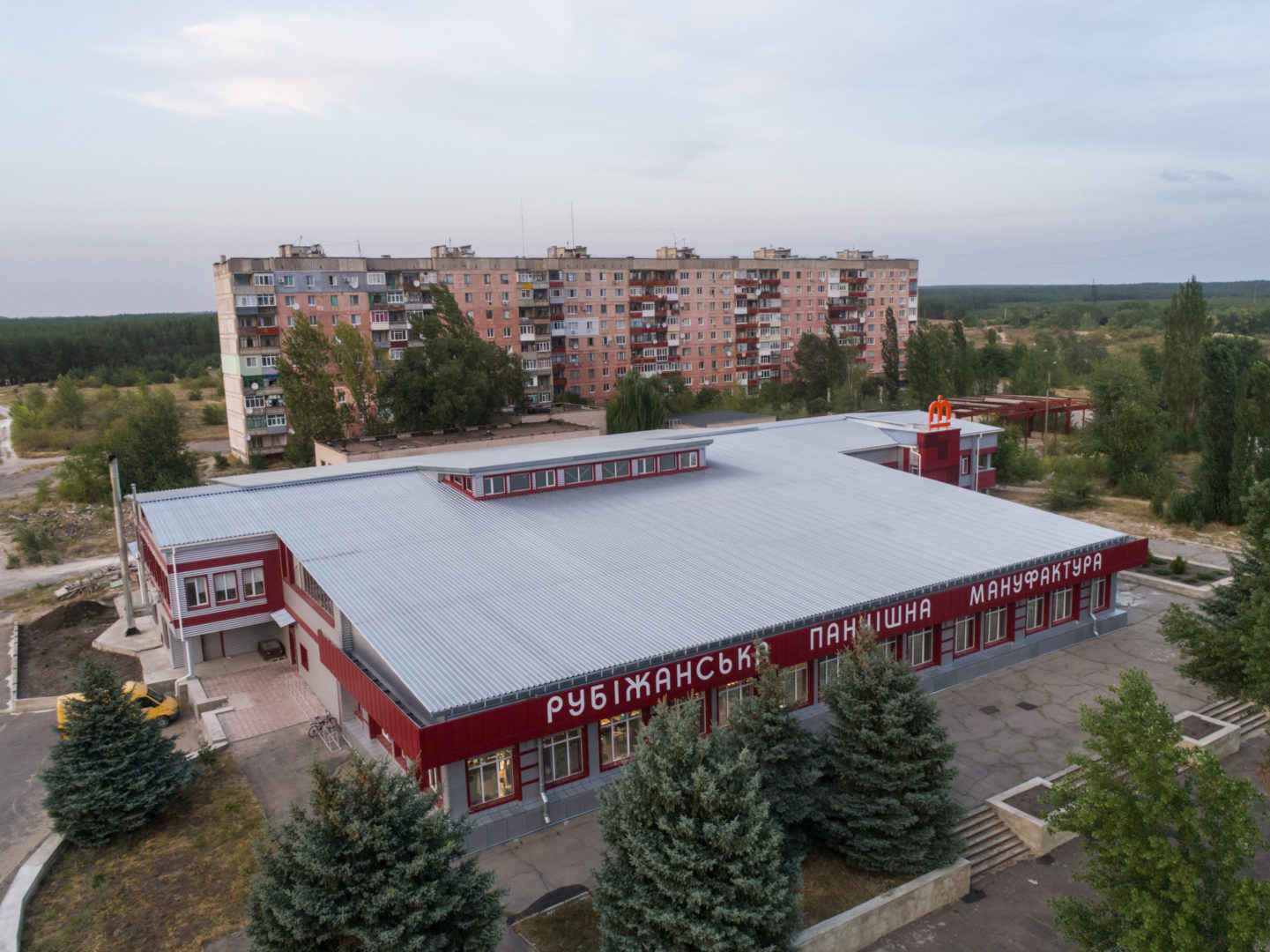
Raw materials and machinery for the manufactory is brought from abroad. Natural and synthetic fabrics are ordered from India; the equipment used for work is from Germany. The fabric shipment may take a few months, and the goods should be made before the high season begins. This is one of the major production challenges. Another problem is a lack of personnel and a long process of specialist training. For example, one can learn to knit and sew in 6 months, but equipment adjuster training takes 3 years. The future professionals train right at the factory.
The war became yet another challenge for the factory. However, following the outbreak of hostilities, the real estate value decreased, and the enterprise moved to a bigger place. In 18 months, it was equipped for production.
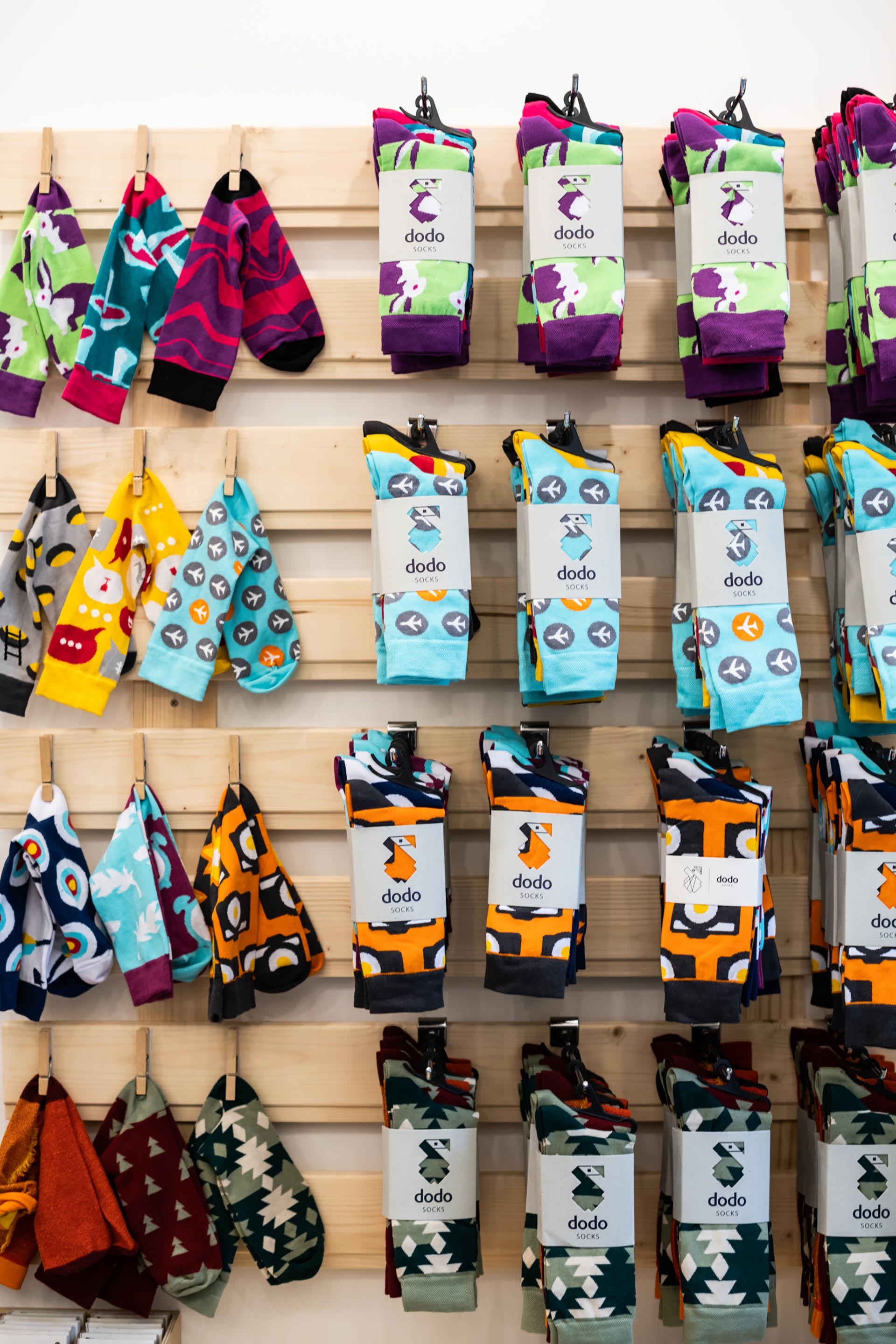
Lviv – Rubizhne
By 2015, the factory in Rubizhne worked mostly with Donetsk and Luhansk, and some goods were also shipped to Kyiv and Odesa. With the outbreak of war, the factory began offering their products to the western regions, where the high quality was appreciated. High demand led to a shortage at the factory. In order to satisfy customers’ needs, they had to buy more equipment, which became an impetus for the enterprise to expand their activities to the whole country.
Hennadii and Oleh Misiurenko ventured to invest in the development of the factory. This has yielded good results. Now, they have representatives in every region, and an active cooperation with the manufacturers from western Ukraine, including “Dodo Socks” has begun.
Olha Ushakova, head of sales in the manufactory in Rubizhne, explains why their cooperation is special:
— We enjoy working with them and it’s mutual. When you make a sock for them, it’s not just a sock, but an emotion. They are very scrupulous in everything, in colors: if something’s not okay, they change the basis. They are ready to experiment. Recently, we’ve created a new sock for them that should be worn inside-out. They combined some technical moments, picture clippings, and designer elements. While working with them, we feel that we are developing, because they set high standards for everything.
The colleagues from Lviv also like that their partners from Rubizhne self-develop, attend professional exhibitions, buy new equipment, and monitor product quality.
— We liked the fact they had full control over the production. I mean, when the socks are produced, they mark them; and then, in case of defect they know exactly who did that, during what shift and by what machine.
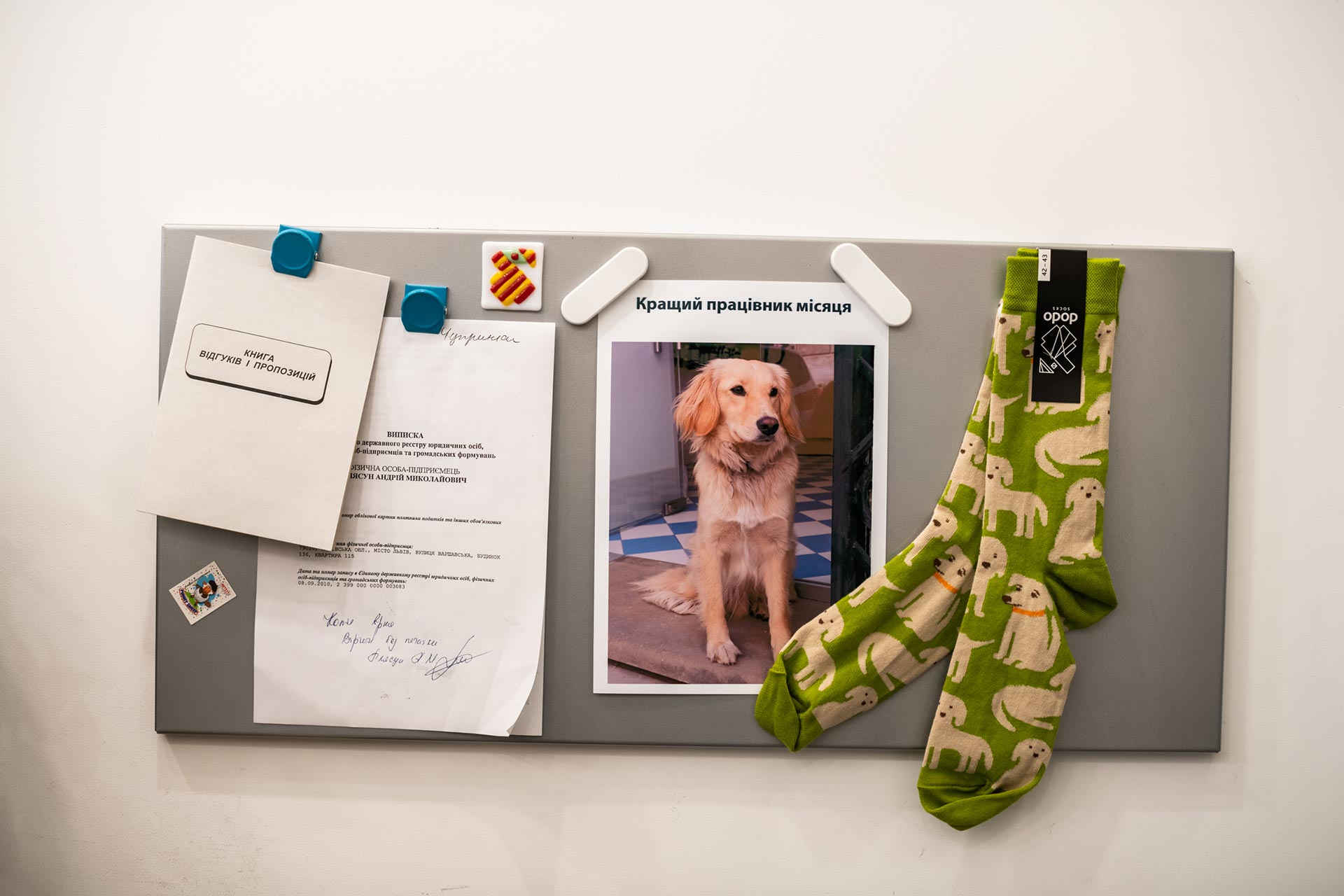
After visiting the manufactory in Rubizhne, “Dodo Socks” founders were astonished by the working conditions at the enterprise:
— We were shocked, because it’s so clean there and it’s all so large. And now he (director – Auth.) is constructing, for instance, a gym for the employees. They have their own café there; they really do their best. Hennadii is very humble, with an old modest car; but as for the employees, they are interesting, cool, smiling and they do enjoy their job – it’s really nice.
Stereotype breakers
At the beginning, both in Lviv and Rubizhne, they didn’t know what to expect from this cooperation. “Dodo Socks” founders tell, at first, they even googled what side of the front Rubizhne is. For almost a year they communicated remotely, so it was difficult to get some idea of the partners. Marta recalls how it all began:
— During the first calls, they, obviously, responded to me in Russian. But it was very interesting that after a while Olia, who was kind of our manager and was accommodating “Dodo”- related activities, started talking to me in Ukrainian some time later, and it was really cool.
In November 2018, the guys from Lviv visited Rubizhne for the first time. It was one of the first trips of the team to the extreme east of the country. They were pleasantly surprised by the friendly people and calm atmosphere of the city.
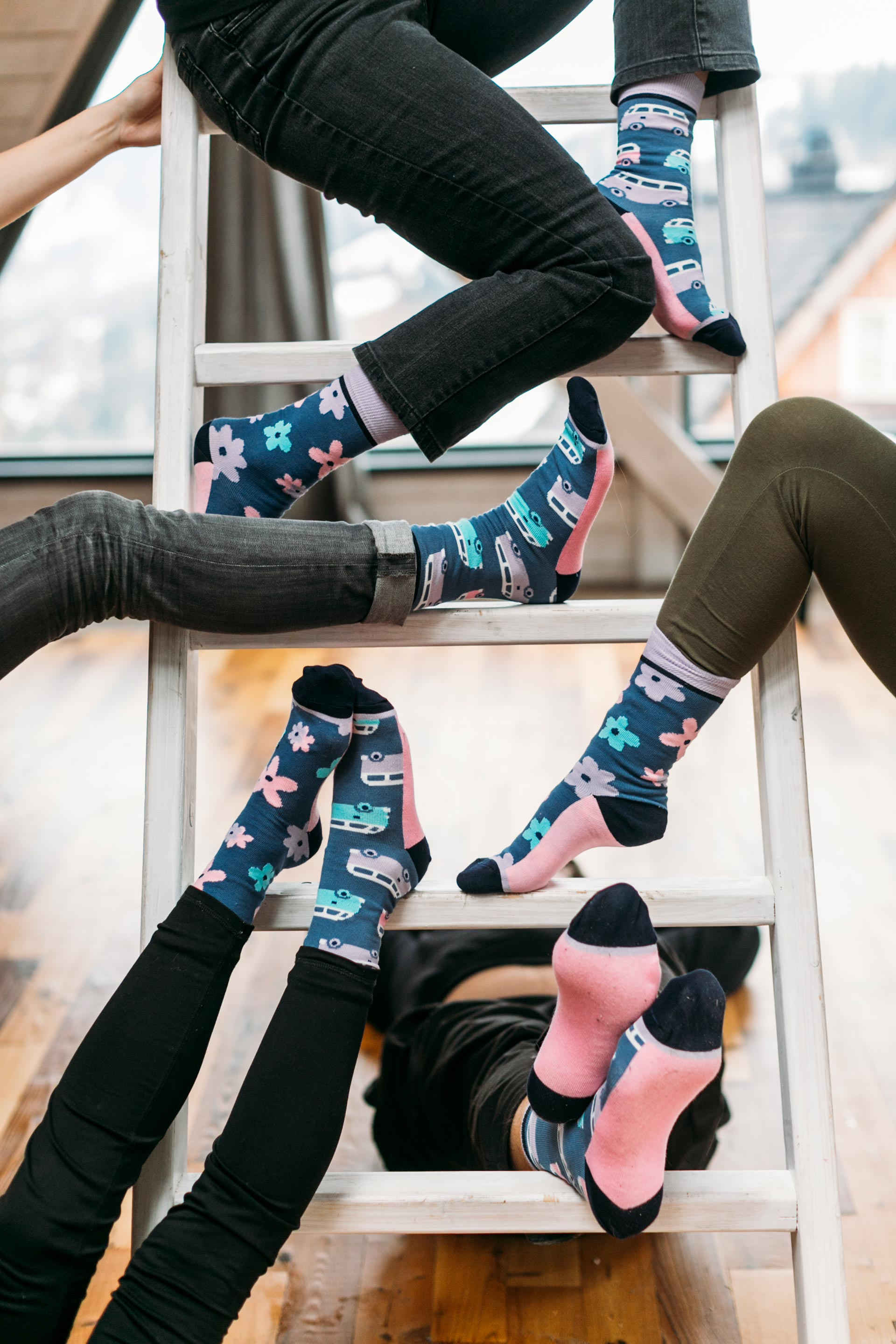
At first, when hearing that “Dodo Socks” are sewn in Rubizhne, people from Lviv were often surprised, since they were thinking in stereotypes about the East of Ukraine. Now, the entrepreneurs from Lviv even emphasize their cooperation, Marta says:
— I like the idea itself – that there is Lviv and Rubizhne, two extreme points of Ukraine, and we make a cool product and, so far, everything’s okay, touch wood. We’re all very happy about it.
To give emotion
For “Dodo Socks” it’s not enough to produce just a good sock. They try to make it interesting and give the owner an emotion.
Prints for the “Dodo” socks are very diverse. You can find anything here: sets with dinosaurs, animals, scientists, famous characters, bicycles, mushrooms or borshch – it’s the absolute flight of imagination.
In the early days of the brand, Marta painted prints while still working. Today, most of the ideas are generated by the team. The customers’ wishes, occupations, and preferences are also taken into account.
The guys from Lviv say they do not even try to compete with the mass-market producers. They don’t have their own production for it, so there’s no chance for competition, except in design.
— There is a market for ordinary socks, sold in a supermarket, and then there is a market for more interesting socks. The former is of little interest to us.
This poses challenges both to designers, and manufacturers of the factory, where the products are sewn, because they have to create not just a good-quality sock, but a masterpiece. Though the team is happy when they see people in their socks.
— You go to some festival, or an exhibition, or Jazz Fest in Lviv, and you see lots of people wearing those “Artista” or “Kunsht” sets. This is fantastic!
Andrii and Marta say that not everyone is ready to take such products seriously in Ukraine.

— Most manufacturers think this is some sort of an online joke shop, and that we sell 10 pairs of socks a month. Especially, finding out that we left IT for the sake of socks, they don’t understand why this happened.
Colorful “Dodo Socks” are bought by a very diverse audience:
— Recently, we’ve opened a shop in Lviv, we have sellers there. We really love this place; sometimes, we like selling there by ourselves to look at the audience. Both chemistry teachers and older scientists with briefcases visit the shop. Some priests came by, as well.
“Dodo Socks” are proud that their products are worn by such respectable people, as, for instance, diplomat Roman Vashchuk. Moreover, in 2017, “Dodo Socks”, together with some other Ukrainian brands, were presented to the Prime Minister of Canada (and a great lover of socks with flashy prints), Justin Trudeau, as a gift from the Ukrainian Delegation.
The partners from Rubizhne have also been wearing designer socks lately:
— I remember I had never worn such socks before, and then, I was sitting in colorful socks with my friends, we came in, and they glanced at me that way, you know. Then, they say, “Hena (shortened from Hennadii), why are you wearing socks for children?” I say, “You understand nothing!” Socks, though such a little detail, can highlight your personality.
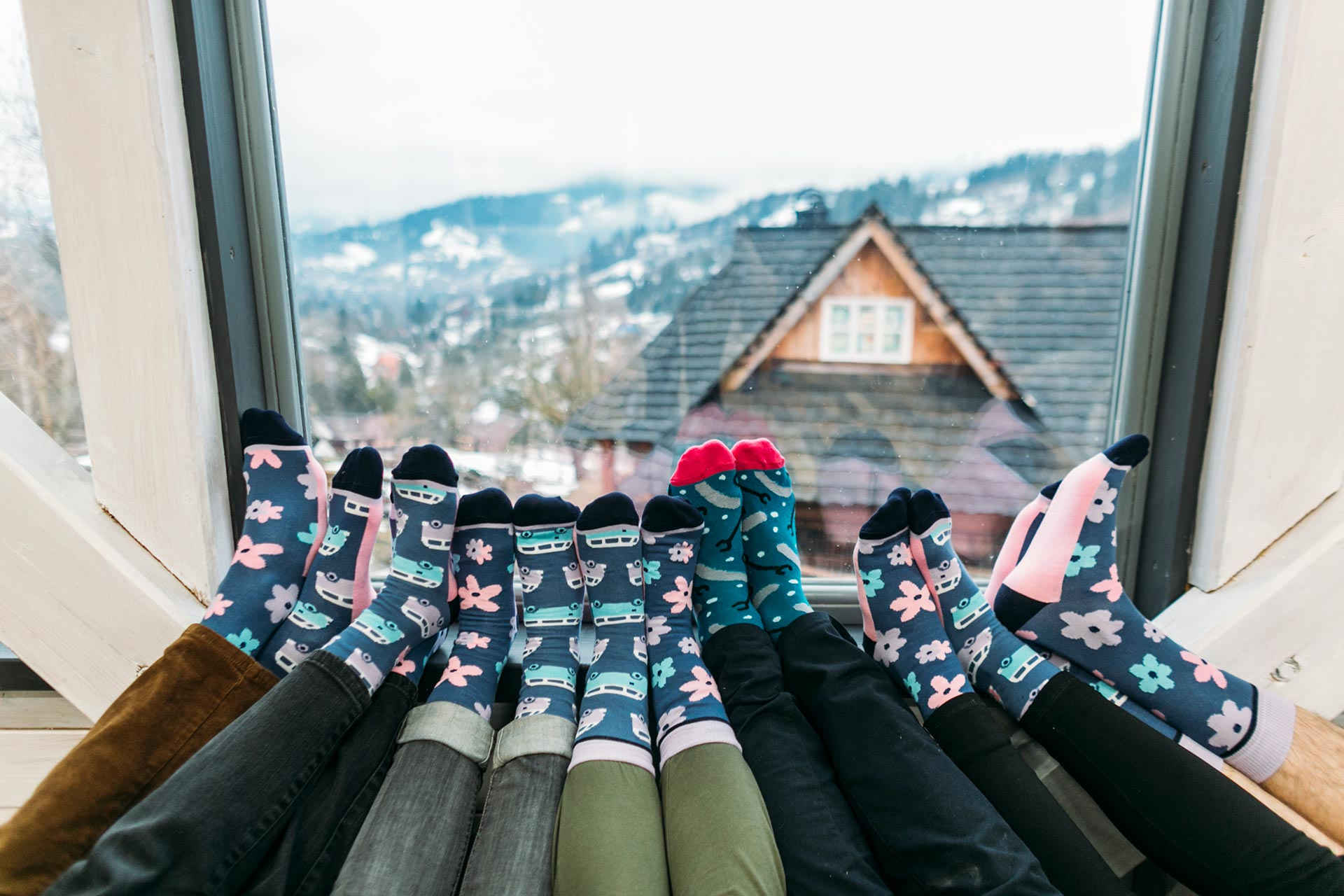
Socks for the world
As “Dodo Socks” gradually enter new markets, they are not going to limit their production to the socks, and are planning to expand the range of products. Marta explains:
— Corny as it may sound, I have a dream that our socks will be known all over the world. Cause we opened our shop on Etsy with no advertisement, and people from Belgium, America, and Australia buy our socks and write, “Wow, how awesome!” The “Kunsht” set is another story. Once, in Berlin, we saw a woman running in our socks with Maria Prymachenko (Ukrainian folk-art painter – Transl.) printed on them. Maybe, she’s Ukrainian, but we think she is local.
The brand is worn by active people, who often share photos from their travels with them wearing those socks. Such interaction inspires a lot, Andrii Pliasun says:
— If you’re in a bad mood, just open Instagram, write a “dodosocks” hashtag, and watch – someone’s in the mountains, someone else is in Venice, Norway, Iceland. It’s nice to see your socks travelling.

